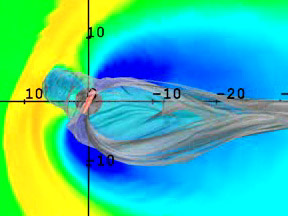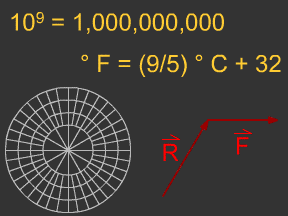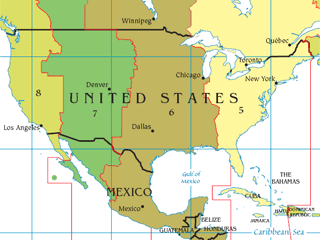Many modern supercomputers, like those shown here, are actually numerous computers that are linked together to make them far more powerful.
Click on image for full size
Courtesy of UCAR Digital Image Library
Using Computers for Science
In the last decades, computers have become a normal part of life. They are used to send e-mail, write a school report or look up recipes. They are used to keep track of the balance in your bank account. They are used to deliver money to you at an ATM, crunch the latest baseball statistics and deliver phone calls to the right residence. They might even be used to help drive your car!
As much as computers have become a part of our daily lives, they have also become an integral part of modern science. They are essential in helping scientists to understand the world around us. Computers have changed the face of science so that scientists are no longer constrained to doing just experiment-based or theoretical research. Now scientists can enter results and data into a computer and the computer, utilizing mathematics and abiding by the physical laws, can recreate a virtual physical world right on the computer screen.
Supercomputers have especially revolutionized the scientific process and are used in everything from meteorology to molecular biology to astronomy to environmental science.
You might also be interested in:

Some scientific problems and processes are so complex that you need SUPERCOMPUTING power to tackle them! Just what is a supercomputer? A supercomputer is a computer that is among the largest, fastest or
...more
Scientists who study space weather make extensive use of computer models to make sense of complex phenomena. This is a way in which space weather is quite similar to Earthly weather, for weather forecasters
...more
Some concepts are used in many different fields of science and serve as a general purpose "toolbox" that helps us understand and manipulate ideas across disciplines. These "tools for math and science"
...more
Some basic concepts find applications in many, many places throughout science, especially physical science. We have grouped these "starting points for science" into three clusters: space, time, and matter.
...more
In the last decades, computers have become a normal part of life. They are used to send e-mail, write a school report or look up recipes. They are used to keep track of the balance in your bank account.
...more
When it is noon where you live, it is midnight on the opposite side of the world. Usually when we think of time, we mean "the time of day where I live". If we say something happened at 9 AM, we mean it
...more
The force of magnetism causes material to point along the direction the magnetic force points. This property implies that the force of magnetism has a direction. As shown in the diagram to the left, the
...more













